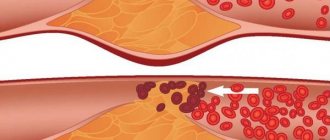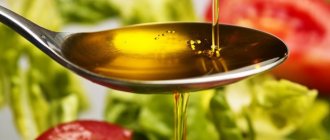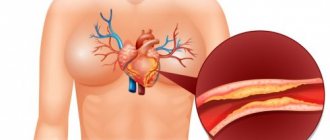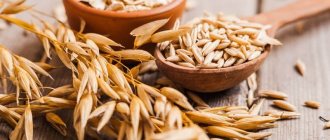Today, many people have begun to refuse to eat meat, citing the fact that it contains a lot of cholesterol and other harmful components.
Cholesterol is a biologically active substance belonging to the group of polyhydric alcohols, which is necessary for the full functioning of the body. Its deficiency leads to insufficient production of hormones by the endocrine glands, deterioration of the emotional background, and changes in the structure of cell membranes. High levels of cholesterol in the blood inevitably lead to the development of such a dangerous disease as atherosclerosis.
To maintain normal plasma cholesterol concentrations, you need to exclude sausages and smoked meats . But you don’t have to go to extremes and completely give up meat. It is enough just to study the information which meat has more cholesterol, and which has a small amount.
Cholesterol content in different types of meat
Meat products have long been considered the most valuable source of nutrients necessary for human life. First of all, this product is a storehouse of animal protein, which plays the role of building material for all cellular structures. Cholesterol is also present in meat, but its amount primarily depends on the type of product, as well as on how the animal was kept and what it was fed throughout its life. From the point of view of organic chemistry, meat consists of the following components:
- water component from 45 to 50%;
- protein fraction from 16 to 21%;
- fats up to 45%;
- mineral component from 0.5 to 1.4%;
- B vitamins and others, enzymatic substances - depending on the variety
You should also pay attention to the fact that the chemical properties of meat by-products will be somewhat different from muscle fibers. Meat from animals that lived in the wild has different chemical characteristics than those that were raised in households or farms.
Pork
There is an opinion that pork is considered the most harmful type of meat product due to its high cholesterol content. Is it so? In fact, the amount of this substance depends on the age characteristics of the pig, its weight, and the thickness of the fat layer. 100 grams of young pig contains no more than 40 mg of cholesterol. Adult pork tenderloin contains about 75 mg of cholesterol per 100 grams.
Diet experts do not recommend eating pork for patients with digestive tract problems and people suffering from liver disease.
The situation with pork by-products is somewhat different.
- The brain of pigs is richest in cholesterol , containing about 2 g of harmful substances per 100 grams of product.
- The liver and kidneys contain 135 mg and 285 mg of cholesterol, respectively.
- Pork tongue can be compared to piglet meat in terms of cholesterol content.
Beef
Beef meat has long been considered a dietary product. It is recommended for use by sick and weakened people, nursing mothers, and young children. The muscle pulp of calves has a pleasant taste, soft texture, rich nutritional qualities, and is easily absorbed by the body. As for the meat of adult cows, it has a rough fibrous texture, which somewhat impairs its digestibility. 100 grams of beef (flesh) contains about 76 mg of cholesterol. This is an average value, since the content of this substance depends on the age of the animal, as well as on the part of the body from which the meat product was obtained.
Beef by-products are not only a storehouse of nutrients, but also cholesterol. Beef tongue contains about 90 mg of cholesterol per 100 g. As for the liver , per 100 g of this product there are more than 350 mg of harmful substances.
The method of heat treatment of products also affects the fat content. So frying can increase this indicator, and boiling , steaming or cooking in the oven slightly reduces it.
Mutton
Sheep and ram meat is famous for its unusual taste, which not every consumer likes. Meat contains a certain amount of cholesterol (97 mg per 100 UAH of product). In addition, the product contains a substance – lecithin, which helps reduce the concentration of serum cholesterol. Therefore, for people suffering from lipid metabolism disorders, the choice of lamb is very acceptable.
Lamb tail contains a large amount of fatty polyhydric alcohol, but the benefits and harms from it do not overlap each other. tail contains Omega 3 fatty acids, which are essential for the reproductive health of female and male bodies. The high content of vitamins allows you to maintain the normal functioning of internal organs, helps improve the condition of the skin and their derivatives (nails, hair).
The harm of lamb tail fat lies in its high calorie content and cholesterol content. Its systematic use leads to a rapid gain of extra pounds and the formation of fatty plaques on the walls of blood vessels. People suffering from diseases of the digestive tract (cholecystitis, pancreatitis, hepatitis) should also avoid this product.
horsemeat
For Slavic peoples, horse meat is a delicacy. But for Asian cuisine this is a completely familiar product. Horse meat contains a small amount of fat. There are only 65 mg of cholesterol per 100 g of horse meat. Therefore, the answer to the question: “Can I eat horse meat if I have high cholesterol?” positive. Due to the content of many easily digestible proteins in horse products, its nutritional qualities are much superior to beef and pork.
Rabbit meat
Rabbit meat has the most delicate texture and pronounced nutritional properties. This particular variety is considered ideal for a diet aimed at losing extra pounds. The cholesterol content in rabbit meat is very small - 40 mg per 100 g of product. Rabbit meat, when eaten, is digestible by more than 80%, so it is recommended for use by all categories of the population, including the elderly and young children.
Chicken
Chicken is a leader in low cholesterol content . The white meat (chicken breast) of these birds contains 32 mg of the substance per 100 g, and the meat of the lower and upper extremities contains about 88 mg per 100 g. In addition to cholesterol, chicken contains a lot of protein and essential amino acids, which are necessary for the coordinated functioning of all organ systems.
Chicken liver contains cholesterol in significant quantities - 40 mg per 100 g of product, and how much of this substance is contained in chicken stomachs ?
There are 212 mg of cholesterol per 100 g of chicken stomachs, which is almost half as much as in chicken liver. This suggests that individuals suffering from hyperlipidemia should consume chicken by-products very carefully.
How does diet affect lipid profile?
The daily human diet contains foods that increase cholesterol levels in the blood. It is common to distinguish between bad (LDL) and good (HDL) cholesterol. In the second case, lipoproteins have a positive effect on the body and do not cause disease. Foods that may contain “bad” cholesterol primarily include meat, dairy products and eggs.
They are saturated with animal fats, which produce low-density lipids. At the same time, vegetable fats do not affect the level of lipoproteins, since they have a different chemical structure and contain sitosterol and polyunsaturated fatty acids. They, in turn, on the contrary, normalize fat metabolism.
Thus, the indication on the label of vegetable oil that it is cholesterol-free does not correspond to reality - it cannot be there. The largest amount of LDL is found in refractory meat fat. In addition, the risk of developing atherosclerosis when consuming certain foods is assessed depending on what type of fatty cholesterol acids predominates in them. These can be harmful saturated ones or anti-atherogenic unsaturated ones.
Thus, beef fat contains a large amount of solid unsaturated fats and is a product contraindicated in atherosclerosis. Eating beef every day can significantly increase blood cholesterol levels. At the same time, the increased content of lipoproteins in sea fish does not prohibit their consumption, since it is high in density and normalizes lipid metabolism in the body due to the content of polyunsaturated fatty acids.
Experts divide all products that contain low-density lipoproteins into 3 groups: those that need to be excluded from the diet (“red” list), those that do not significantly increase cholesterol (“yellow” list) and those that have a positive effect on fat metabolism in the body (“green” list). " list).
The list of foods containing cholesterol and information about its amount (mg) is presented in the table:
| Meat | Bird | Fish | Dairy |
| Beef (pulp) – 80 | Chickens – 80 | Krill – 1250 | Russian cheese – 1130 |
| Pork (pulp) – 70 | Goose – 110 | Horse mackerel – 400 | Dutch cheese – 510 |
| Lamb (pulp) –70 | Duck – 50 | Mackerel – 280 | Butter – 180 |
| Rabbit – 40 | Turkey – 210 | Carp – 270 | Sour cream 30% – 130 |
| Beef fat – 110 | Flounder – 240 | Mayonnaise – 100 | |
| Lamb and pork fat – 100 | Herring – 200 | Homemade cottage cheese – 60 | |
| Beef by-products – 150-3000 | Hake – 140 | Cream 20% – 80 | |
| Pork offal – 50-2000 | Pollock – 110 | Cow's milk – 10 | |
| Cod – 30 | Condensed milk - 30 |
For people with elevated LDL levels and those suffering from atherosclerosis, it is necessary to consume foods with the least amount of bad cholesterol. Dairy and curd products must be low-fat.
Diet can affect cholesterol levels
Some foods can reduce the content of unnecessary lipoproteins and remove them from the body. These include: fresh vegetables and fruits, juices from them, fish with a high concentration of polyunsaturated fatty acids, vegetable oils.
Cholesterol in meat: comparison table
Today it has become fashionable to refuse meat due to the fact that it contains cholesterol. Indeed, cholesterol-free meat is something of a tall tale. Some people are interested in the question: “Pork or beef has more cholesterol, which is better to eat?” You can choose those varieties of meat products that have dietary properties. To do this, you need to familiarize yourself with the table showing the cholesterol content in meat products.
| Type of meat | Cholesterol (mg) per 100 g of product |
| Pork (adult pigs) | 75 |
| Piglets | 40 |
| Beef (tenderloin) | 76 |
| Mutton | 97 |
| horsemeat | 65 |
| Rabbit meat | 40 |
| Chicken (breast) | 32 |
| Chicken (legs, wings) | 88 |
| Turkey | 39 |
| Duck | 86 |
| Goose | 90 |
The table shows average values that show which meat has the least cholesterol. The cholesterol content depends not only on the type of product, but also on the method of its preparation .
Sausages and fats
Despite citizens’ skeptical perception of the likelihood of meat getting into domestic sausage, almost each of us continues to visit the gastronomy department of the supermarket. According to the level of cholesterol content (mg per 100 g), sausages can be arranged in the following order:
- liver and pate – 150 – 170;
- semi-smoked – 112;
- sausages and sausages – 100;
- servelat, salami – 85;
- boiled varieties – 40 – 60.
Naturally, the exact amount of cholesterol depends on the specific manufacturer.
The next component used in cooking is animal fats. They do not differ much in the amount of cholesterol: beef fat contains 110, pork, lamb and goose fat – 100 mg.
Should you give up meat if you have high cholesterol?
In case of pathology of fat metabolism, accompanied by an increase in the concentration of serum cholesterol, doctors advise changing the diet by removing foods rich in cholesterol. Many patients believe that by giving up meat, the problem with high cholesterol can be solved quite quickly. Is it so?
Meat products are a source of fats, protein, other nutrients, enzymes, and vitamins. Refusal of this product can provoke a disruption of physiological processes that continuously occur in the body. Patients often ask doctors questions: “What meat can you eat if you have high cholesterol?”
Harm from meat products
Despite the impressive list of beneficial properties, meat can be harmful to human health. This is due to the low fiber content, which stimulates the functioning of the gastrointestinal tract and promotes the movement of food bolus through the intestines.
The lack of this dietary fiber leads to difficulty digesting food, which may result in a feeling of heaviness in the abdomen.
HFAs and cholesterol in meat are another disadvantage of meat products. Livestock nutrition affects the amount of low-density lipoprotein (LDL) contained in the product.
Some manufacturers significantly enhance the negative properties of meat by using hormones, nitrates, pesticides, coloring agents to give a more appetizing shade and other chemical components. Therefore, doctors recommend giving preference to a homemade product.
Why do vegetarians have high cholesterol?
Vegetarians are people who completely give up eating meat. Every person who joins the ranks of vegetarians has his own reasons for this. Vegetarian food is predominantly plant-based, so it does not supply exogenous cholesterol. But it also happens that vegetarians suffer from hypercholesterolemia.
In such people, an increase in plasma cholesterol levels occurs against the background of a disruption in the production of its endogenous form. Normally, the liver produces the amount of cholesterol required by the body, which is used for metabolic processes. With pathology of the liver tissue or genetic disorders, excessive secretion of this substance begins, which causes its high serum level.
Cholesterol and health
Cholesterol is an essential component of our body. It is more correctly called cholesterol (chemical name), which is a substance from the family of lipophilic alcohols. The vast majority of it is synthesized in liver cells and only about 20% enters our body with food.
It is a very important component of all tissues; therefore, when the amount fluctuates in the body, pathological processes begin to occur, for example, with a decrease, there is a risk of developing oncological processes, and with an excess, the formation of fatty plaques in the arteries and veins is provoked.
The body needs cholesterol because:
- is an obligatory component of the cytoplasmic membranes of all mammals;
- Without it, the synthesis of steroid hormones, bile acids and vitamin D will be impossible.
The normal concentration in the blood is from 3.4 to 5.2 mmol per liter, which is necessary for the full functioning of the body. According to data released by scientists belonging to the American Heart Association, in order not to develop negative processes in the bloodstream, daily cholesterol intake should not exceed 300 mg.
Meat composition
The most beneficial substances for the human body contain meat muscles and its fibers. As for the fat layer, it contains more harmful cholesterol than useful components. Therefore, when buying meat, you will have to look at how fatty it is and choose leaner cuts. The composition of chemicals in meat is approximately the following:
- water - 57-73%,
- proteins - 15-22%,
- saturated fats - up to 48%.
In addition to the listed main components, meat also contains minerals, vitamins, enzymes, and if the animal or bird was raised “under chemicals,” then it may also contain hormones.
Keep in mind that saturated fats contain high cholesterol levels. It is this “bad” cholesterol that enters the human body in large quantities and is deposited on the walls of its blood vessels. Cholesterol contained in fatty cheeses is also, by the way, no less harmful. What cheese to eat for this problem can be found in a separate article
In addition to vascular damage, fatty meat products also lead to disruption of metabolic processes, the appearance of excess weight, and various cardiovascular pathologies. Therefore, think carefully about whether to eat fatty meat for this problem.
Useful properties of seafood
In general, seafood, even despite the presence of cholesterol in some of them, is harmful to the human body. First of all, because they contain many microelements and vitamins. They are especially recommended for iodine and selenium deficiency.
Antioxidants in seafood normalize cholesterol levels in the body
What is worth remembering about the beneficial properties of seafood:
- They are low in fat - no more than 5%.
- Meat contains a lot of protein - up to 20%.
- Food comes with a huge amount of vitamins, microelements, and antioxidants.
- During digestion, a minimum of nutrients are lost.
- They are very easily digestible - the body does not have to try to digest, for example, a mussel.
Properly processed seafood, when consumed regularly, will keep the body healthy. But you need to know how often and in what quantity you need to use them.











